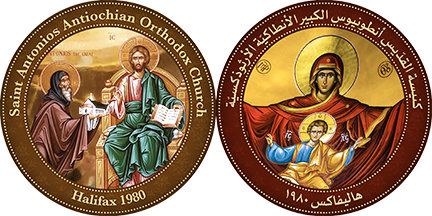Lebanese Festival


Archdiocese literature (abridged)
Holy Baptism is a key Sacrament for the Orthodox Church, whereby one is cleansed through Divine Grace of all sins by being immersed three times in water in the Name of the Holy Trinity (Father, Son and Holy Spirit). They are reborn into a new holy and spiritual life.
Having become a member of the Church through Baptism, infants can receive Holy Communion and from the first days of their life on Earth, they can become vessels of the Holy Spirit. For as the Lord Himself said: “Let the children come to Me, and do not hinder them; for to such belongs the Kingdom of Heaven” (Mattew 19:14).
The Baptism of both adults and children takes place in the presence of sponsors (Godparents), who act as guarantors for the one being baptized. The sponsor(s) are responsible for following after the spiritual and religious upbringing of the child. Yet it is necessary to perfect oneself morally even after Baptism, and there is still the possibility to fall. In modern times, the Baptism is usually administered on or after the 40th Day after birth, when Christ was brought by His parents to the sacred Jewish Temple to fulfill Jewish tradition.
The Sacrament of Holy Baptism was instituted by Our Lord after His resurrection, when He appeared to His disciples and said: “… Go therefore and make disciples of all nations, baptizing them in the Name of the Father and of the Son and of the Holy Spirit, teaching them to observe all that I have commanded you; and lo, I am with you always, to the close of the age” (Matt. 28:18-20).
Saint John the Baptist

Baptism Services at Saint Antonios
Baptism services at Saint Antonios Church are officiated by Fr. Maximos Saikali, and those interested in an Orthodox Christian Baptism should:
Complete this online application form
If desired a reception can occur at the Church Hall or the Olympic Hall. A complete list of businesses associated with Church members who provide professional services for such events is forthcoming, and we apologize for having omitted anyone (please email us if you would like to be included).
Holy Matrimony

Holy Matrimony is a sacrament of the Orthodox Church in which those desiring to wed agree before Christ, the Priest, and the Church to be loyally united together for life. God’s grace is imparted through this ceremony to help the couple live together, mutually fulfilling and perfecting each other. The Sacrament of Marriage is actually two services in one: first, the Betrothal service and then the Wedding or Crowning service (they are described further below).
Archdiocese Literature (abridged)
The Betrothal Service: The couple’s entrance into the church from the narthex, the area closest to the outside world, represents that the relationship which began “in this world” will now move into the church for blessing to enter “the world to come.” At this time the bride and groom each declare their willingness to be married to the other. This part of the service recognizes the civil union through which a man and a woman come with free will to join each other. The priest then gives the bride and groom candles that they will carry throughout the rest of the service as a sign of their willingness to follow Christ and His light. They are acknowledging their desire to have their lives lighted by the teachings of Christ and His Church. During the Betrothal, the Priest prays for the couple to have a life of perfect love together, for salvation, and for the blessing of children from their union. The Priest first blesses the rings and then lifts them above the heads of the bride and groom as he blesses their betrothal three times, in the name of the “Father, and the Son, and the Holy Spirit,” invoking the Holy Trinity. The rings are then exchanged and placed on the ring finger of the right hand of the man and the woman. Promises are made and oaths are taken with the right hand, symbolizing the right hand of God that blesses. Christ ascended to sit at the right hand of the Father. Finally, those who inherit eternal life will go to the right hand of God. In some Orthodox traditions, the bride and groom exchange the rings to symbolize that they will compensate for each other’s strengths and weaknesses. Only by the union of the two are they made perfect.




Wedding service:
Wedding Services at Saint Antonios
Services at Saint Antonios Church are officiated by Fr. Maximos Saikali, and those interested in an Orthodox Christian wedding should:
- Complete the online application form bellow.
- Note that the Parish Council has decreed that an administrator will vet the application, and then they will organize a meeting between the Priest and the applicants.
The marriage reception can occur at the Church Hall or the Olympic Hall if desired. A complete list of businesses associated with Church members who provide professional services for such events is forthcoming, and we apologize for having omitted anyone (please email us if you would like to be included).
Holly Matrimony Application Form
Parishioner Information
To update your information or to register as a parishioner, kindly Click on the button below to fill-out the Census form.
